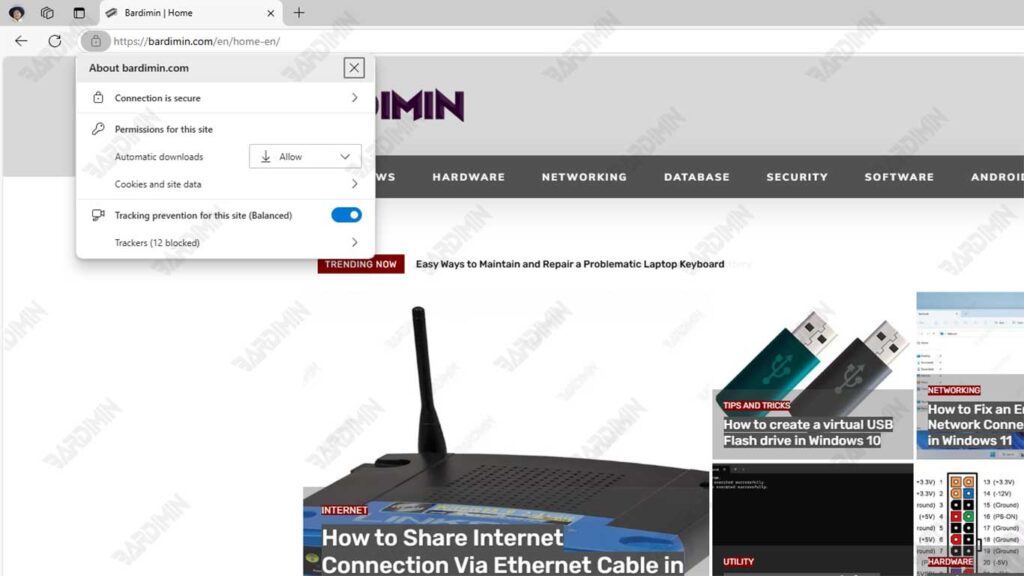In today’s digital era, the internet has become essential to daily life. However, behind the convenience offered, there is a serious threat: the theft of personal information. Insecure websites are often utilized by irresponsible parties to steal important data, such as usernames, passwords, and credit card information.
The risks that arise from providing data on insecure websites vary widely, from identity theft to financial losses. Therefore, recognizing the security signs of a site is an important first step to protecting yourself from such threats.

Characteristics of Fake Websites
Ensuring that the websites you visit are genuine is essential for protecting your personal information. Here are some traits that can help you recognize a fake website:
Check the URL Carefully
1. Enter the Site Address Directly in the Browser
It’s best not to search for sites through search engines for essential services like banking or online shopping. Always manually enter the site address to ensure the authenticity of the URL.
2. Pay Attention to URL Spelling
Fake websites often use URLs that are similar to the real ones, with few changes that are difficult to recognize. Examples:
- Replace the letter “o” with the number “0” (example: amaz0n.com instead of amazon.com).
- Add or subtract letters, such as paypai.com (instead of paypal.com).
3. Avoid Clicking Links from Unknown Sources
Don’t easily trust links sent via email, instant messaging, or social media. These links could lead you to fake sites designed to steal personal information.
4. Don’t Enter URLs from Email Links
Links in emails are often used in phishing attacks. If you receive an email asking you to sign in to a specific account, don’t click the link. Instead, open your browser and access the site by typing in an address you already know.
Make Sure URLs Start with HTTPS
Knowing the security of a website is essential, especially when you want to make online transactions or enter personal data. One way to make sure a website is secure is to check if its URLs start with “HTTPS”.
HTTPS Signifies a Secure Connection
HTTPS (Hypertext Transfer Protocol Secure) is a secure version of HTTP, which encrypts data sent between the browser and the server. It protects your data from prying eyes by third parties, so sensitive information such as passwords and payment data remains safe.
Notice the Padlock Icon in the Browser Address Bar
When you visit a site that uses HTTPS, you’ll see a padlock icon in your browser’s address bar. This symbol indicates that the connection to the website has been encrypted. However, despite the presence of this symbol, it does not always guarantee that the site is genuine.
Secure Online Transactions
If you’re making an online transaction, make sure that the URL address starts with “https://” and that there’s a padlock symbol in your browser’s address bar. This is an important step to ensure that your connection is secure and that the data you transmit cannot be accessed by third parties.
Checking Site Authenticity
A few important steps must be taken to ensure that a website is safe and genuine.
Verify Contact Information
First, check the contact information available on the site. Trusted sites usually include a clear physical address, phone number, and email. You can verify this information by searching the internet.
- Make sure your physical address, phone number, and email address are verifiable. Fake sites often don’t list clear contact information or only use generic emails like gmail.com.
- Do your research to make sure that the phone number and address listed belong to a legitimate company.
Review Site Design and Content
In addition to checking contact information, the quality of the site’s design and content can also provide important clues about the authenticity of the site. Trusted sites usually have a neat and professional design, with an organized layout. In contrast, fake sites often look poorly maintained.
- Native sites generally have a consistent design and high-quality visual elements.
- Unauthorized sites often have a lot of typos or bad grammar.
- Excessive pop-ups or offers that are too good to be true, such as massive discounts, are often an indication that the site is not trustworthy.

